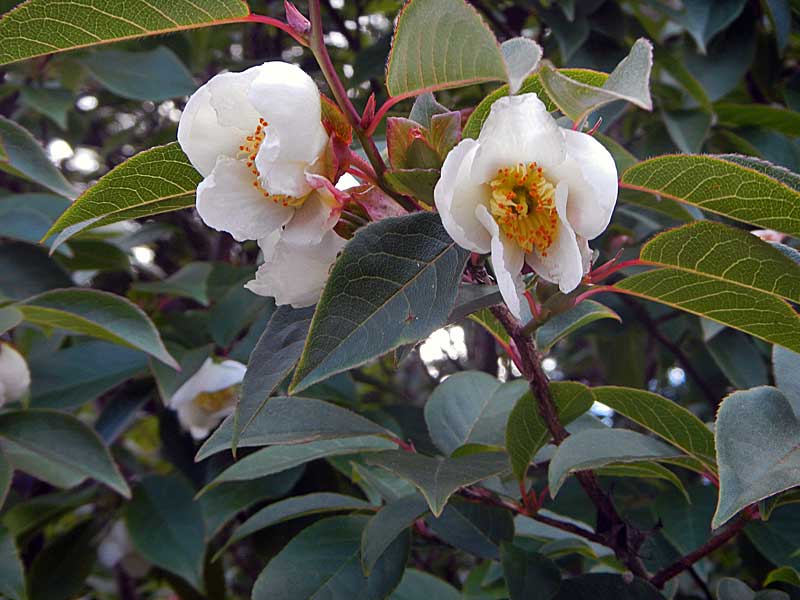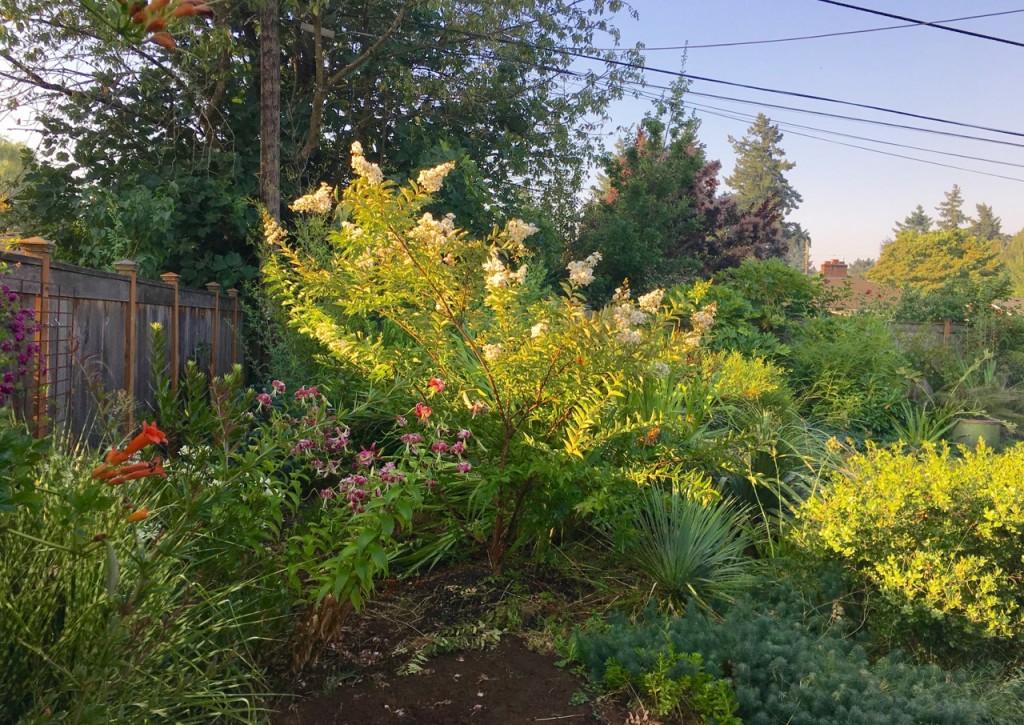I’ve been studying trees for my new garden this week, and with so many worthy candidates, I’m giddy at the prospects. In my last garden, I got a bit carried away, adding some 25 trees in our 50 x 100 city lot. All in all, I loved those trees, but probably wouldn’t plant some of them again, mostly for aesthetic reasons. One Birch was too close to the patio. Or rather, we planted it before we considered a patio; if only we’d sited it a few feet farther out… But the birches did a superb job of screening us from the street, provided a shady westside garden, and their glowing white bark was nice in dead of winter. There were a few misses, e.g. Acer plantanoides ‘Drummondii’, aka Variegated Norway Maple, pretty, but reverted to green in a most ungainly manner in spite of our best efforts. The Albizia julibrissin, a gorgeous but a weak tree and so so so messy. (I hear that A. julibrissin ‘Chocolate Summer’ is smaller and more manageable. Hmmmm.)
Some earlier choices, though, were spot on, and they are still on the favorites list.
At the very top, Stewartia gemmata. How I love that little tree; it had everything going for it. Size, bark, subtle and lovely spring flowers—and scads of them. In fall it was ablaze in oranges and reds. And the shape, ooh la la, a veritable candelabra once shed of its leaves. (The plant lust pictures were of my actual tree. Pretty cool, no?)

Fagus riversii – or so said the tag. But it didn’t get as big as the stats claimed–and it had a graceful undulating canopy; the tag said it would be globe-shaped. We planted our River’s Beech on the northwest-facing hellstrip, an 8′ swath of sunny super-draining garden. The leaves are dark and chocolately: honestly, looking good enough to eat. Shortly after we planted it, city work crews tossed a piece of heavy equipment against the trunk. It made a big gash half-way round the bark, and I always wondered if the damage stunted its growth. The upshot, it might have been a good thing. Those trees can get big.

Acer circinatum, the Vine Maple. I love these multi-stemmed Pacific Northwest Natives–their sinewy structure, luminous spring foliage, fall color that can create a weakness in the knees. Vine Maples make such good screening, the perfect kind in my book, creating definitive boundaries, but with a thru sight light. And its open branching structure, perfect for birds to flit about freely.

The trees for consideration list is growing, with plenty more room, on the list at any rate, if not in the yard. (You suggestions are most welcome.) Not in any particular order, here are a few up for consideration:
Lagerstroemia ‘Natchez’ aka Natchez Crape Myrtle

x Chitalpa tashken
Fagus sylvatica ‘Ansorgei’ aka Ansorgei European Beech (feathery foliage & open canopy)
Oxydendrum arbore aka Sourwood

Magnolia macrophylla var. ashei (big, tropical-looking leaves. Disclaimer, I have one tree started, but I’m going to need another.)

Vitex agnus-castus ‘Silver Spires’
So there you have it, my partial short list. Additional study to follow.

